In 1841, John O’Donovan, a prominent Irish scholar and historian, undertook a significant task as part of the Ordnance Survey of Ireland, focusing on the antiquities of County Waterford. His meticulous work not only mapped the physical landscape but also documented the region’s rich historical and archaeological heritage, providing invaluable insights into its past.
A Scholar’s Journey
O’Donovan, known for his expertise in Irish language and history, was commissioned to collect information on various sites across Ireland. His letters, often called O’Donovan’s Ordnance Survey Letters, are a treasure trove of observations about local antiquities, folklore, and the cultural landscape of the areas he surveyed. His correspondence from 1841 highlights significant archaeological findings and historical sites in County Waterford.
The Gráinseach: A Notable Mention
Among the various antiquities described by O’Donovan is the Gráinseach, a term that refers to a granary or a place associated with grain storage. This site holds historical importance as it reflects the agricultural practices of early Irish communities. O’Donovan’s detailed descriptions provide context to the Gráinseach’s role in local economies and its significance within the broader framework of early Irish society.
Insights into Local History
O’Donovan’s letters are filled with rich descriptions of other notable sites across County Waterford:
- Ancient Monuments: He documented numerous standing stones, ring forts, and burial mounds that dotted the landscape, each telling a story of Ireland’s prehistoric inhabitants.
- Churches and Monasteries: The letters highlight early Christian sites, including churches founded by saints such as St. Declan, emphasizing their role in spreading Christianity throughout the region.
- Folklore and Traditions: O’Donovan captured local legends and customs associated with these sites, preserving oral histories that might otherwise have been lost.
The Impact of O’Donovan’s Work
The Ordnance Survey conducted by O’Donovan was groundbreaking in documenting Ireland’s heritage. His work laid the foundation for future archaeological studies and provided a framework for understanding how historical narratives are constructed through physical evidence.
Conclusion
John O’Donovan’s 1841 survey of County Waterford remains a vital resource for historians and archaeologists today. His detailed observations illuminate the past and remind us of the importance of preserving our cultural heritage. As we explore County Waterford today, we can appreciate the depth of history surrounding us—largely thanks to O’Donovan’s diligent efforts to document it for future generations. Whether visiting ancient sites like the Gráinseach or reflecting on local legends, we are invited to connect with the rich tapestry of Ireland’s history that continues to shape its identity.
Citations:
[1] https://www.askaboutireland.ie/reading-room/digital-book-collection/digital-books-by-subject/ordnance-survey-of-irelan/
[2] https://assets.gov.ie/82479/76367254-10c6-4d6a-9a27-349b5f9f01b9.pdf
[3] https://forebears.io/ireland/munster/waterford
[4] https://en.wikipedia.org/wiki/John_O’Donovan_(scholar)
[5] https://www.askaboutireland.ie/reading-room/digital-book-collection/digital-books-by-county/waterford-county/odonovan-letters-containi/index.xml
[6] https://www.familysearch.org/en/wiki/County_Waterford,_Ireland_Genealogy
[7] https://sources.nli.ie/Record/MS_UR_052212?sid=18091
[8] https://catalogue.nli.ie/Record/vtls000427325
[9] https://en.wikipedia.org/wiki/Dungarvan
[10] http://kinsalebeg.com/chapters/placenames/placenames.html
Did 19th Century Media Perpetuate Religious Women’s Wells To Gráinseach?
If you like to peel back history, you’ve probably noticed that the focus of old articles is so often on Ardmore. But, we were delighted to find this journal article from 1841. Although it ends with a somber impression of the area, it is worth exploring. It also gives some valuable information on Grange in Waterford.
It is an ordinance survey completed by John O’Donovan in 1841 and describing the antiquities of County Waterford.
“SITUATION. This Parish is situated in the Barony of Desies Within Drum and is bounded on the north, east, and partly on the south by the Parish of Ardmore, and on the west by that of Kinsalebeg.
NAME. Is in Irish Gráinseach, meaning a granary or storehouse for corn where the farmers brought the tenth part of their corn for the use of the Clergy. Of the old Church of this Parish no part remains at present but the southeast corner and very small fragments of the side walls but from the foundations, it can be ascertained that it was sixty feet in length and twenty feet in breadth. Its walls were three feet one inch in thickness and built of slate stones and lime and sand cement. Its graveyard is still in use but contains no monument of antiquity.
In the Townland of Baile Eileain or as it is anglicized Ballylane, there is a holy well called Tobernamanrialta (Tobar na mBan Riaghalta) i.e, the Religious Women’s Well, at which Stations were performed on the 15th of August. It is said to have been dedicated to the Blessed Virgin but it never bears her name.
There is nothing else of any antiquarian interest in this Parish.”
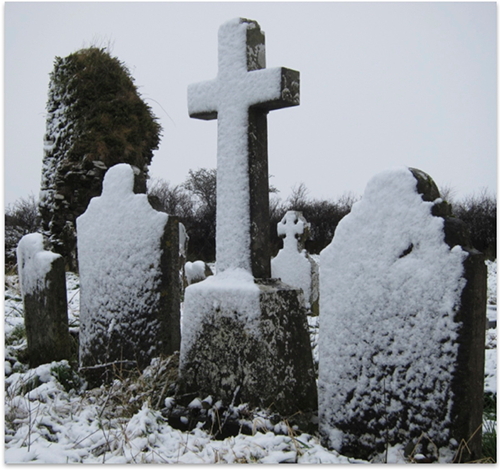
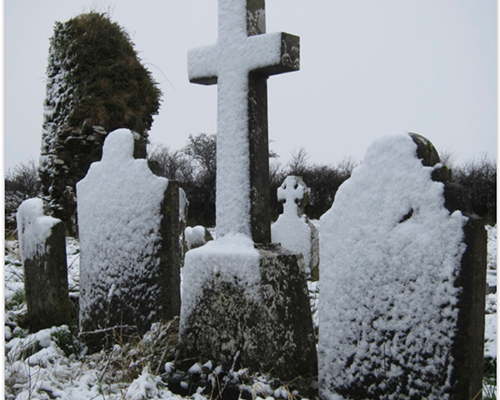
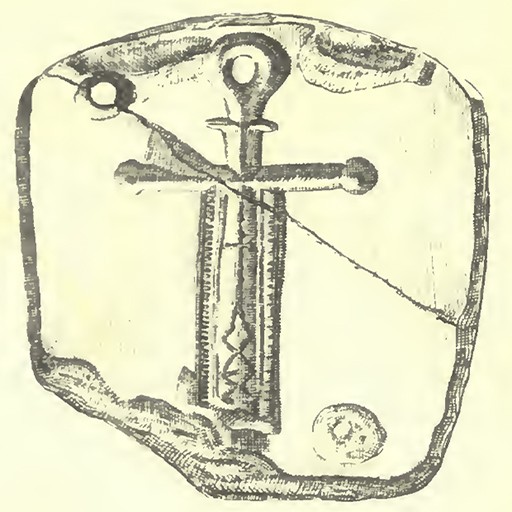
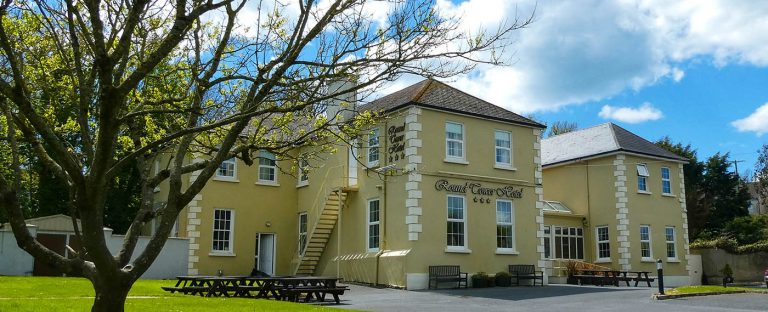
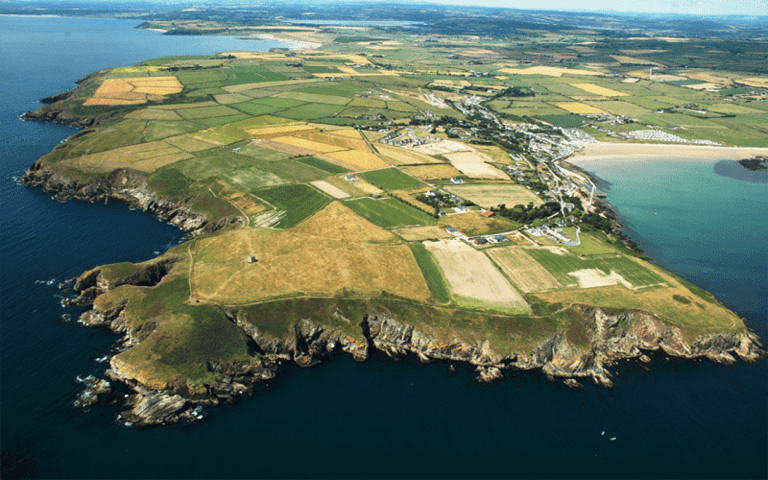
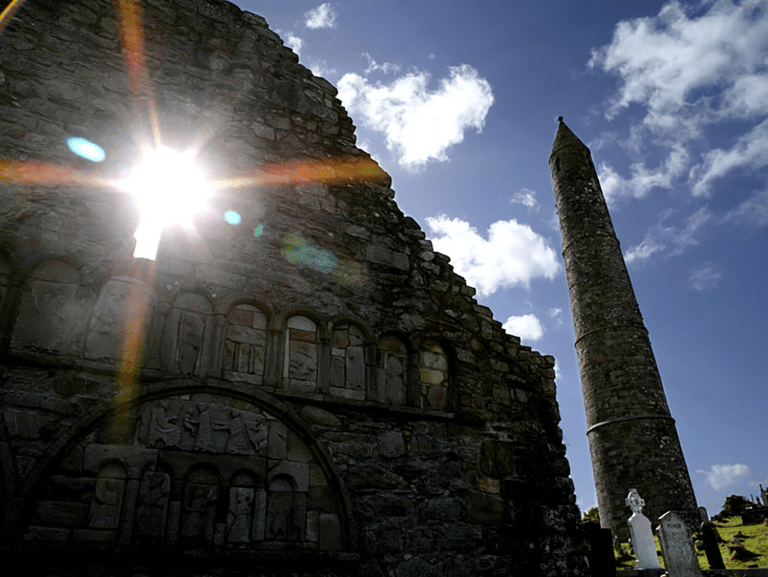
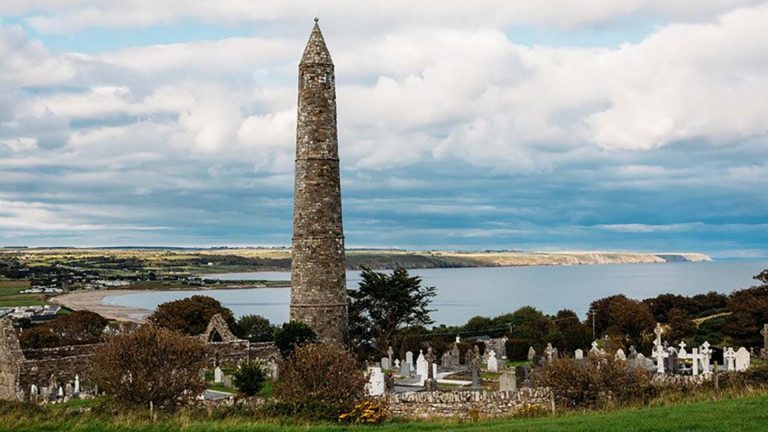
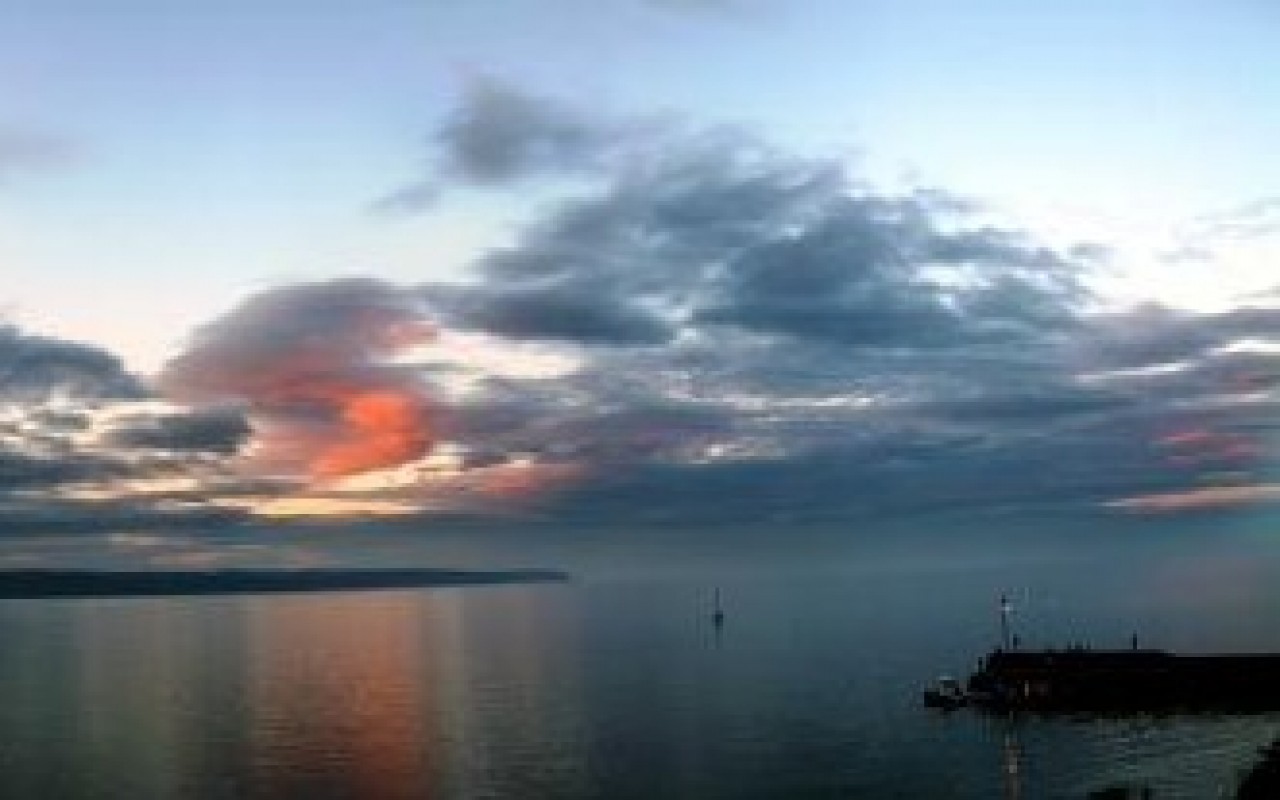
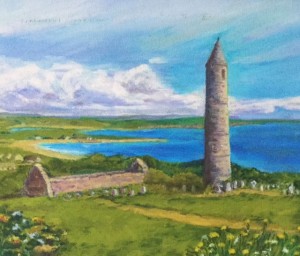
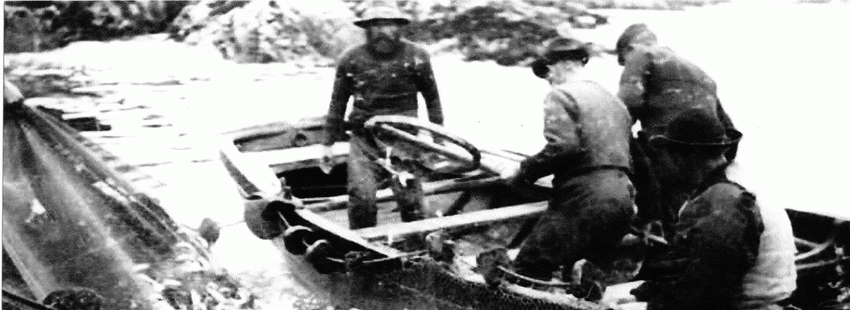
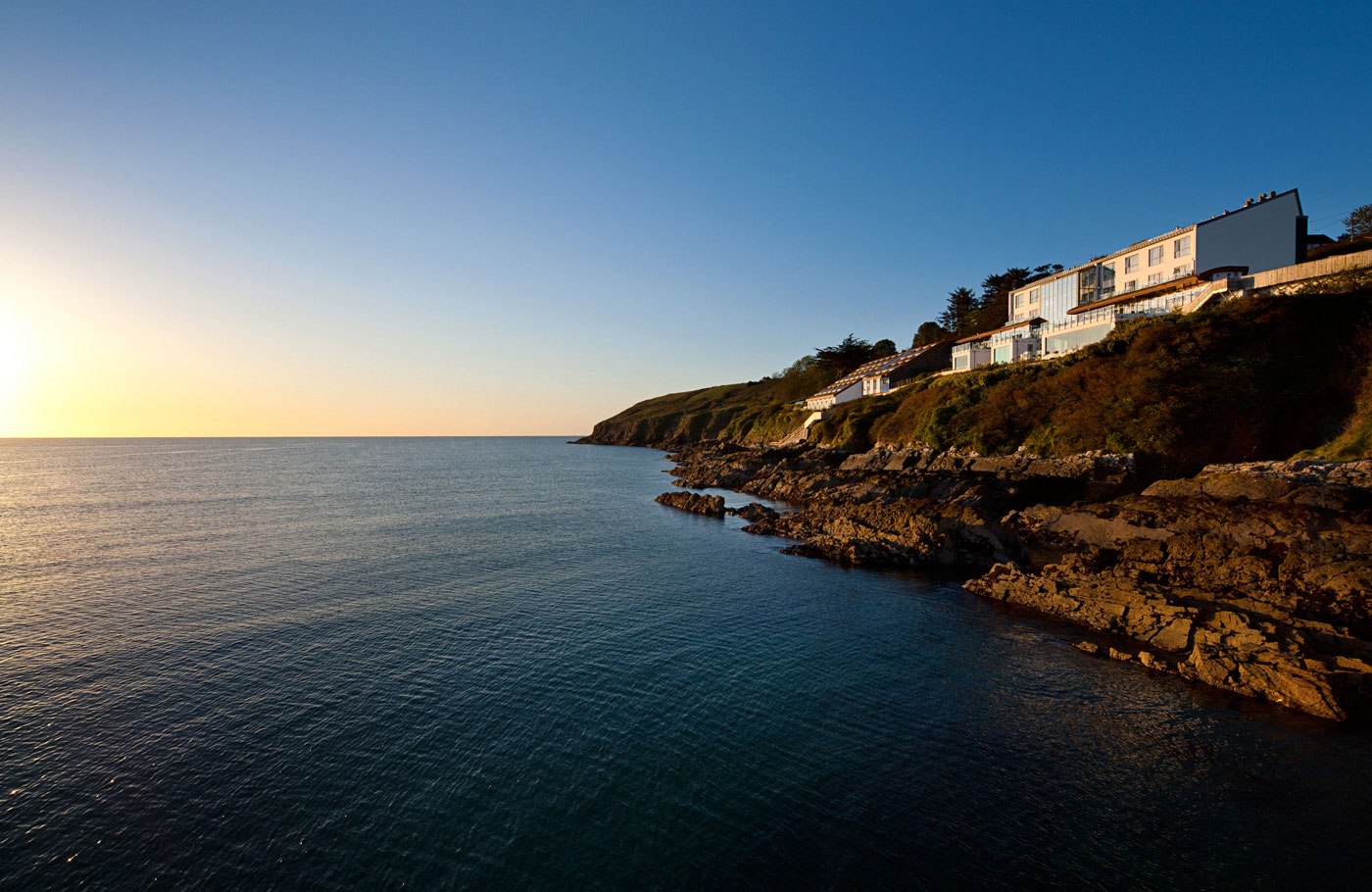
Dear “Ardmore, Grange Heritage Group”,
I was thrilled to find your site recently. Thank you for all of your postings. Please, please, keep them coming. My paternal grandfather is from Ardo and I have been visiting / studying Ardmore for the past 13 years. I have been lucky enough to get to know many of the locals and have been tracing my roots through every source available. Your information is priceless. MY grandfather was John Leahy. He was born in Ardo in 1870 to Patrick Leahy and Mary Fitzgerald Leahy. They had a cottage near the edge of the Cliff rented from Walter Terry. The O’Connell brothers were kind enough to bring us … several years ago… to the cellar hole that still exists. My grandfather and his 2 brothers came to the US in the 1890’s and their 3 sisters remained in Ireland. Going back a generation, some of the siblings of Patrick were born in Grange.
I am obsessed with genealogy and with the help of John Fitzgerald, (gray house, RIP), the O’Connells and Teresa and Mossie O’Connor and Margaret Coyne, I was able to connect with some of my Fitzgerald cousins still in the area…. They are from Mick Fitzgerald’s line (he is mentioned in many articles).. and are Mary Murry and Katherine Hourigan. Mick Fitzgerald mentioned is the nephew of my great grandmother. I was also abIe to find a Leahy cousin, Ursula O’Neill (Youghal). I share all of this to let you know that what you are doing is a great service to those of us who crave information about family history. Even though I have uncovered some of the information already on my own, I still enjoy reading your version. On our next trip (Spring) to Ardmore, I would love to meet you and thank you in person. Please continue on with your labor of love. I can’t wait to see what you will post next. Gratefully, Eileen Myers / Pittsfield Massachusetts